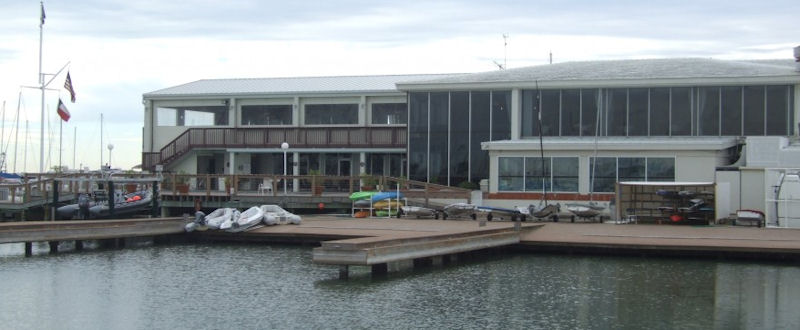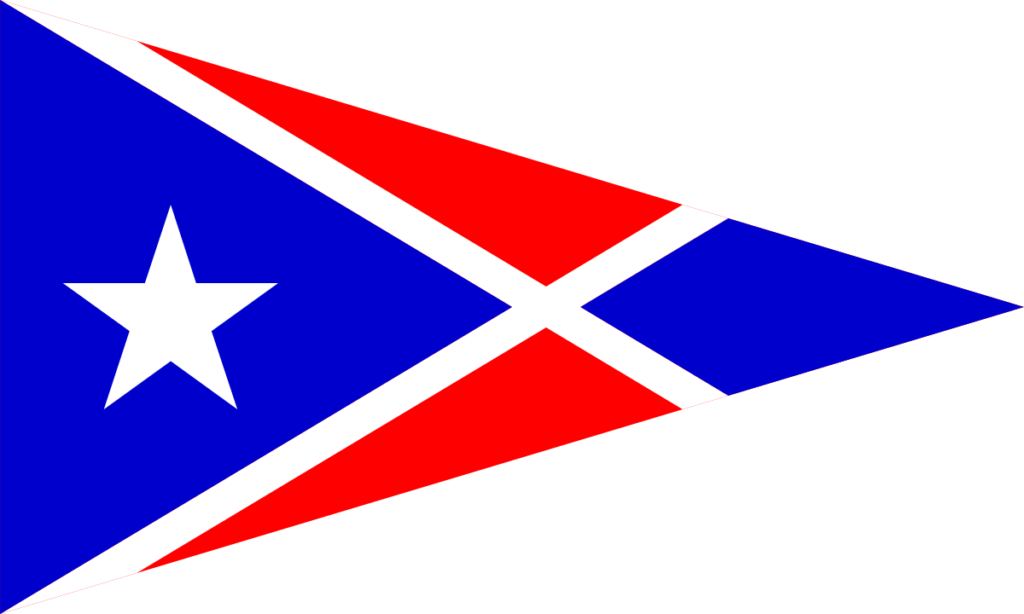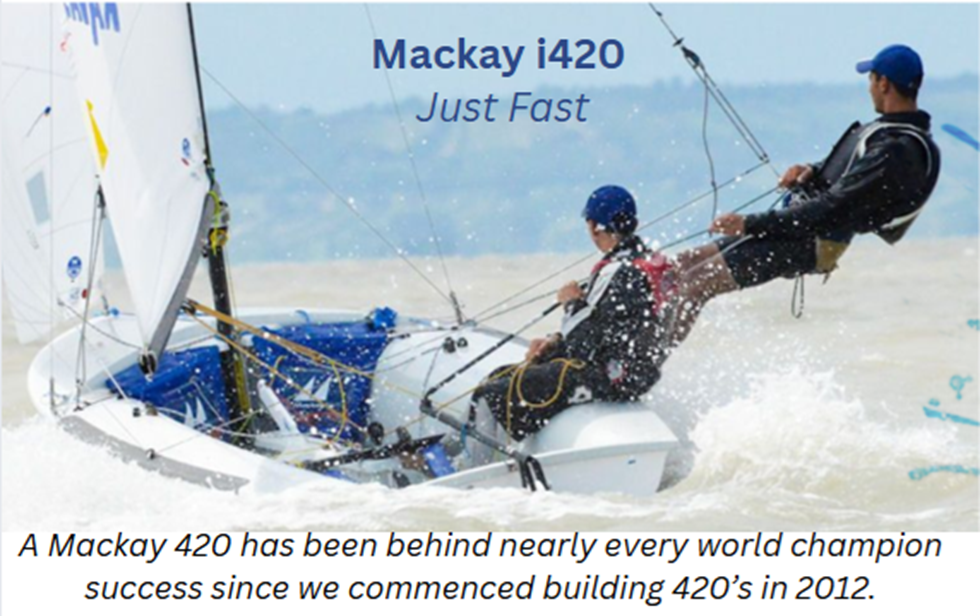Exciting news! CCYC is hiring for a full time, salaried position, coordinating a Development Program for youth sailors in the Corpus Christi area, specializing in Optimist, Radial, Laser and Club 420. Coaches Texas A&M CC Collegiate Sailing Team. Also includes occasional adult private sailing lessons. For more information and to apply, please see our job ad HERE.
Recent Club History:
Corpus Christi Yacht Club Reborn
In early 1950 the Chamber of Commerce, perceiving that some of the difficulties with the State over location might be because of the Club’s name, suggested that it be changed. They suggested merging with the inactive Corpus Christi Yacht Club. After discussing the matter with Dr. Blair and Guy Warren, who represented the dormant club, Commodore Mitchell at the March 8, 1950 regular monthly meeting reported to the members: “The Chamber of Commerce has suggested that for civic reasons the name of the Club be changed from the Southwestern Yacht Club to the Corpus Christi Yacht Club, incorporating into the Club the organization now bearing that name consisting of 5 members.” The motion to merge the two clubs, keeping the Constitution and By-Laws of the Southwestern Yacht Club, passed unanimously.
At the next meeting, Dr. J.B. Blair was introduced to the members. He presented the burgee of the Corpus Christi Yacht Club, explaining the meaning of the colors and star. Thus the charter of the Corpus Christi Yacht Club, after 15 years, took on a new life. It was once again an active yacht club, tracing its roots back to 1923 by way of the Southwestern Yacht Club, the Corpus Christi Sailing Club, and the Thomas Lipton Yacht Club. Thanks to the efforts of Dr. Blair and Guy Warren, who personally kept the charter alive through those inactive years, the Club can trace an unbroken lineage back to 1923. And thanks to those many dedicated members of the Southwestern Yacht Club, the Thomas Lipton Yacht Club, and the Corpus Christi Yacht Club’s heritage has been greatly enriched.
The Floating Clubhouse
Much thought, planning, and many discussions with the City were spent during this first year of the merger in a search for a clubhouse location. Time after time it was thought that the problem was solved, only to fall through each time. Many additional locations were considered: on a bulkhead to be built out from the seawall between the Lawrence St. T-Head, on a fill that the City was considering in the Marina across from the Coliseum, and on the fill where the present Clubhouse now stands. To finance the project, the members voted to issue $100 bonds to be bought by each member. $16,000 worth of CCYC 20-year %1 Debenture Bonds were issued to cover the estimated cost of the project.
By the end of the year, however, it appeared that all avenues had been exhausted in trying to obtain space for a building on land within the Marina area, so the decision was made to go ahead with plans for a floating clubhouse. A war surplus Air/Sea Rescue Vessel was purchased for $1,900 and six months later, after spending roughly $10,000 and much volunteer work for conversion, the membership held their first meeting in their own Clubhouse moored at the end of the Lawrence St. T-Head. That meeting was on June 13, 1951. It would be ten years before the Club would finally solve the problem of obtaining a permanent site and move into a clubhouse on land.
The Changing Years
Purchasing and moving into the floating Clubhouse marked a turning point in the Club’s history. For the first time, the Club owned property and enthusiasm became stronger. Membership grew rapidly under an active recruiting effort. The members were no longer restricted merely to weekend racing or regular scheduled meetings, but could meet everyday at the Club for beer and conversation. There was no bartender; chits were signed on the honor system. The Mess Treasurer kept the liquor in the trunk of his car, and during regattas someone would set up as bartender. Members brought sandwiches for most of the affairs, but on special occasions, meals were catered by Millers Grill.
Participation picked up tremendously. Members pitched in to do volunteer construction work, and those who could not contribute labor contributed money or materials. One of the lady members donated money for furnishing the bar, which was located in the Pilot House and crafted by a master carpenter. In it were located the original ship’s engine controls and the ship’s wheel (the latter which is now mounted on the wall in the present Corpus Christi Yacht Club bar). The pilothouse was extended aft and space below was large enough to seat, with folding tables and chairs, about 45 members for meeting or dining. On the after deck was a reviewing stand where the members, wives, and children could watch other members of the family race. Races were usually started off the Clubhouse and before the south gap was closed in 1958, the course was out one gap, around the red beacon or a cane pole out in the bay, and back through the other gap.
This change in the direction of the Club was not made without pain. With the added expenses incurred by the ownership of property, it was found necessary (six months after moving into the floating clubhouse)to raise the dues to $25, plus $5 federal tax, per Senior Member per year. This dues increase, plus the requirement that every member purchase a $100 debenture bond, resulted in the dropout of a number of the less active members. Efforts were increased to recruit new members. A revision of the By-Laws at this same time also changed the Club into one which was more aligned with the old eastern yacht club tradition instead of the previous family type club, involving women as participating members equally with the men.
The convenience of the location on the end of the T-Head and the Club facilities promoting a social atmosphere, attracted a number of new members. Fifty-one members were added during 1952. Two years after the floating Clubhouse was in place, membership as listed in the first official roster of the Club dated October 1953, totaled 104. Forty-five years and many changes later, twelve of those members or their spouses listed in that roster, are still active members of the Corpus Christi Yacht Club. Those members are: #2 – Dr. Bill Allen, #9 Mrs. Robert H. Blair, #13 – Harvie Branscomb, #18 – Bill Carl, #28 – Mrs. James R. Dinn, #36 – Franklin Flato, #57 – Norman Holmes, #59 – Allen Jephson, #72 – Mrs. W.T. Neyland, #79 – John Pitcairn, #89 – Edwin Singer, and #100 – Bob Wallace. Five of those members joined the Club when it was the Southwestern Yacht Club. Those five members were: Mrs. Robert H. Blair, Harvie Branscomb, Mrs. James R. Dinn, Allen Jephson, and Edwin Singer.
The Club added a lot of color to the waterfront. Races were held almost every weekend. The Snipe, Penguin, and later the Highlander and Sunfish class one-design boats where very active. Club boats participated every year in the races between Galveston and Corpus Christi, and the Club hosted the entire fleet to a party on the years that the race ended in Corpus Christi. Corpus Christi Yacht Club sailors represented the Club in many regattas throughout the country in their one-design classes. In 1957, Buck Bailey, trailing his Highlander to Mentor Ohio (the home port of the Highlander one-design class)won the Highlander International Championship by an unprecedented landslide. The next year, the Corpus Christi Yacht Club hosted the Highlander Internationals in Corpus Christi. Once again, Buck won first place. The races generated considerable local interest due to the unusually big fleet of boats with the large colorful spinnakers. It was the largest fleet of one-design sailboats ever seen in this area up to that time.
Shamrock Cove was the favorite cruising spot during that period. Many rendezvous were held there for overnight cruises and beach parties. Fiberglass was just beginning to be used in boat construction, but all the cruising type boats were still being made of wood. Among boats owned by Club members were a number of beautiful ones, most of them having been built on the East Coast and sailed down. In evidence on the waterfront were such boats as Hoot Gibson’s Alden designed 43-foot schooner, Caroline; Norman Holmes’ Whispering Winds, and later his Cutlass; Lee McMillan’s Sparkman and Stevens 34-foot Desiree; Robert Blair’s 46-foot Viking; Eddie Singer’s 33-foot Seaquester (often sailed by his wife with a boatload of girl scout Mariners); Dr. Guttman’s beautiful varnished mahogany Swedish double-ender, the Saga; Harvey Branscomb’s 33-foot Josephine; and many others. And, there was the beautiful sloop Valiant, owned by Bill Carl, Jeff Carr, Alvie Hill, and Dusty Rhodes. She was so big that they couldn’t even bring her into the Yacht Club. They had to take her through the bascule bridge and tie her up in the inner harbor.
In spite of the very active racing and cruising programs sponsored by the Club, almost from the beginning, efforts were renewed to find a permanent home. The floating Clubhouse was viewed only as a waypoint. By June 1954, the Executive Committee had decided that no more expenses should be incurred for beautification or for the hull (except for necessary repairs). A new Club Site Committee attacked the old problem with renewed vigor. In addition to the old sites pursued unsuccessfully eight years previously, many new locations were added. The City and some of the influential members of the Park Board and Marina Advisory Board were at that time strongly in favor of locating a yacht club in the marina area. They lent their support to the project, even helping to write special legislation to enable the City to grant a lease.
By June 1959, the choice narrowed down to the Herndon Fish Market on the L-Head, the present site of the Club. The City had agreed to sell the site, approximately 90 x 200 feet, to the Club. The price – $18,400 – the estimated cost of filling a comparable area.
At last the Club had the promise of a permanent site on land for a home. Now facing the 120 members was the monumental task of raising enough money to pay for a clubhouse that would meet the long-term needs of the members and that would be a credit to the Club and to the Community.
The Challenge
The challenge was laid down. Did the members really want a new Clubhouse? And if so, would they be willing to put up the money for it? After considerable debate in a spirited July 1959 meeting, the members voted to go ahead, but only on the basis of having $75,000 in hand or in firm pledges by the next meeting in January. As part of the financing, it was agreed that the initiation fee would be raised to $600 and that the fee, less the previously paid $100 debenture bond, would also be applied to present members. The January 1960 meeting was held at the Town Club with a record turnout. At that meeting, it was announced to a jubilant membership that there was already $87,000 in cash and pledges from responsible people in escrow for the new building. The project was on!
Hoot Gibson, who probably did more free work for the Club than anybody else, once more took on the job of designing another clubhouse and working up plans for its construction. Although there were no requirements to clear the plans with the City, nevertheless, all of the plans were presented to the Park and Recreation and other Boards to show them that the Club was trying its best to build something that the City would be proud of. The Chairman of the Parks and Recreation Board, Mrs. Armstrong Price, was a special friend. She stood up for the Club strongly in the various meetings, praising the idea of a yacht club on the waterfront. One of the reasons that the building has the particular roof style that it has, even though more expensive, was because of the desire to make the building aesthetically pleasing. Every effort was made to allay any fears that anyone might have about a private club on the waterfront.
Bob Flato was the sparkplug that made the new building happen. His boundless enthusiasm, never ending optimism, and tireless energy instilled confidence in the members that it could be accomplished. Under his leadership as Commodore during the two years of the planning and construction of the building, an all out effort was made for new members to help provide the necessary funds. Membership was increased slowly. It was disappointing to encounter so much refusal of many knowledgeable, successful people to believe that the Club would “go”, and to support it. There was a surprising amount of “it won’t work” comments.
To cut costs, a number of innovative schemes were employed. The kitchen equipment came from a burned out roadhouse on Rodd Field Road. It eventually gave considerable trouble and had to be replaced (at great expense) along with some used sump pumps that plagued managers from the beginning. Expenses had to be cut somehow to make the limited available money go around. New members were admitted who contributed certain work such as interior design, furniture, tile work, air conditioning, etc. Credit towards initiation fees and other charges were applied against their contributions. And later, the ladies became involved in the decorating and selection of furniture. The finished Clubhouse was one to be proud of, functional, done in very good taste, and a credit to those 120 members who had the vision and courage to take that big challenge.
A Home at Last
During the long period of construction, board meetings were held on site (at first on the first deck and then on the second deck). Usually the board table consisted of a couple of planks set on saw-horses. Chairs were nail kegs or boxes. Hiring had to begin long before the building was ready for occupancy, and that put a further strain on finances. A payroll had to be met without income. So as soon as the lower deck was complete, and while construction was still in progress on the upper one, the staff took over in August 1961. Upon completion of the upper deck, the dining room was opened and quickly gained a reputation for serving outstanding gourmet food – by far the best food in Corpus Christi. Unfortunately, Amiel Jaguet’s reputation traveled afar and he was attracted away from the Club after only a short stay.
Shortly after moving into the new Clubhouse, it became evident that facilities for young people were badly needed. With the membership now doubled to 250, a survey revealed that there were 420 children (considerably more than originally anticipated). Although the $60,000 cost required borrowing from the bank, with some of the members as guarantors of the loan, a snack bar, youth room, plus a structure around the pool for outdoor recreation was added. The loan was retired through increased dues plus a Building Fund assessment. Later, further modifications were made to the building as membership increased and the need for additional space became evident. Originally, a spiral staircase in the bar led upward outside the building to an outside observation deck on the second level. This area was enclosed to gain additional space in both the bar and the Dining Room.
Club Undergoes Major Renovation
Time and the elements took their toll on the Clubhouse and discussions of expansion and renovation began in the mid 1980’s. In 1987, then Vice Commodore Giles Giddings, was put in charge of the project. Little did he know that it would be March of 1991 before the project was completed. The project included expansion of the upstairs dinning room and downstairs bar area, a new kitchen, new pool and upper deck, new locker rooms and restroom, and a new heating and air conditioning system. The cost of the project was $1,850,000 which was $150,000 over the original projections. The Club borrowed $1,000,000 to finance the project, which was $200,000 less than the original projections.



Leave a Reply